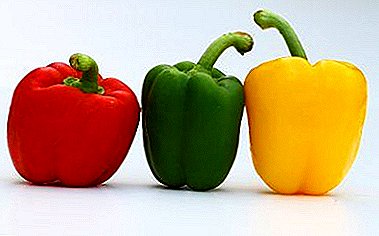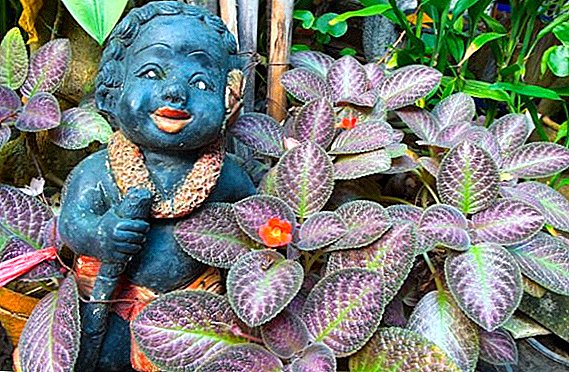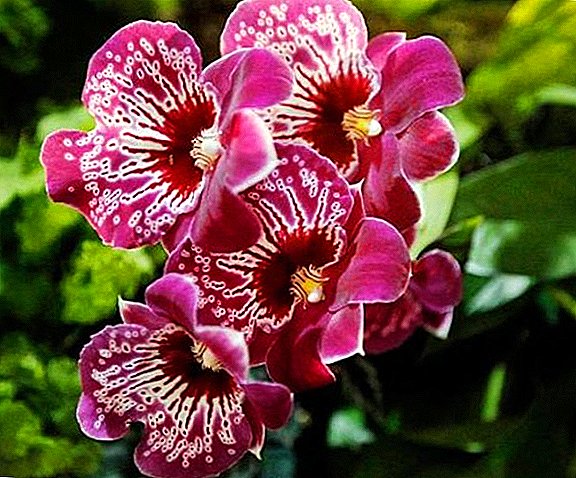
Black currant - one of the most popular and popular berry crops in the entire post-Soviet space.
It became widespread in the Middle Ages, as the best at that time medicinal plant.
As a medicine, currant is used in our days, thanks to the huge amount of vitamins and mineral salts contained in its berries and leaves.
Recently, all new varieties of this wonderful berry began to appear.
How not to make a mistake, and from more than 200 varieties to choose the perfect plant for the garden plot?
It is worth paying attention to the young, and not very widely known variety of black currants Venus. It has many wonderful qualities and useful properties, and has no significant drawbacks.
Description of the Venus variety
Currant Venus variety description:
- Shrub off black currant venus not very high, medium density and moderately spreading. The shoots are soft green, strong, slightly curved, pinkish at the top. The buds are sharp, small, oval, not pressed to the shoots.
- The leaves are medium in size, glossy, green, with sharp teeth on the edges. The scape is rather thick, long and smooth.
- The flowers are small, light pink, with pubescent matt sepals. Grow small brushes, 11 single flowers.
- The berries of Venus are very large, weighing from 2.5 to 6 grams, round, one-dimensional, black. Sweet taste, sweet, almost no acid. The skin is thin, melting, with food almost not felt.
Venus - Universal Grade, i.e., perfect for fresh consumption, and for cooking jams and preserves.
Breeding history and breeding region
 Received Venus as a result of crossing the Finnish variety Bredtorp (Karelian) with the Siberian Seedlings Dove.
Received Venus as a result of crossing the Finnish variety Bredtorp (Karelian) with the Siberian Seedlings Dove.
The breeder of the South Ural Institute for Horticulture V. S. Ilyin was engaged in breeding it.
In 2004, Venus was zoned throughout the Urals region. Due to its increased frost resistance, it quickly began to be grown throughout Russia, as well as in Belarus, the Baltic States and other countries with an unstable climate.
Learn about cold-resistant varieties of black currant:Dobrynya, Gulliver, Belarusian sweet.
Characteristics of currants
Currant venus - This is a medium or medium late variety. Harvesting is necessary in 2-3 doses, because the berries ripen at the same time. Begin collecting around mid-August.
Venus begins to bear fruit a year after planting and has an extremely high yield. With one adult bush can collect up to 5 kg of berries.
Another great advantage of this variety is a very high winter hardiness. Venus easily withstands temperatures down to -35-37C, and does not need shelter. As well as cold, it endures heat and prolonged drought.
Like most varieties of black currant, Venus is self-fertile and does not need pollinator varieties. It is undemanding to growth conditions, unpretentious in care and resistant to such dangerous diseases as powdery mildew and anthracnose.
A photo


Planting and care
A place for currants fit almost any. She loves well-moistened, but not swampy and not acidic, light and fertile soil, rather loamy. You can not have bushes in places with high groundwater levels. Venus tolerates slight shading. Therefore, it is well suited for planting places located in the penumbra.
Crop currants it is possible both in spring and autumn, but during autumn planting - survival rate is higher. The soil at the chosen place begins to be prepared in August, and the planting is carried out in September. The plot is well dug up, weeds are removed and fertilizers are applied, based on 1 square meter: 3-4 kg of rotted manure, 2 tbsp. l superphosphate and 1 tbsp. l potassium sulfate. Then digging and landing pits.
The depth of the pit should be 50-60 cm, diameter - 60 cm. The top layer of soil is mixed with two buckets of peat or humus and 200-300 grams of ash are added, about 1 tbsp. superphosphate and 2 tbsp. potassium sulfate. All this is thoroughly mixed and laid in a prepared pit. From above pour a small layer of clean fertile soil, pour out 1-2 buckets of water and leave for a week. Then proceed to landing.
 In the first two years after planting, care for currants consists in loosening, watering and weeding the soil around the bush.
In the first two years after planting, care for currants consists in loosening, watering and weeding the soil around the bush.
Though Venus and tolerates drought well, but it is very moisture-loving and needs regular watering. For the season, the bush must be watered 3-4 times: in early June, in early July, in September and November.
At least one bush poured at least 2-3 buckets of water.
With the beginning of fruiting, you can begin to feed the plant. Top dressing using organic fertilizers will work well in the spring, and phosphorus and potassium in the fall. Spring dressing is carried out after the end of flowering, and autumn - after harvesting.
The first pruning bush carried out at the time of landing. At the same time, all strong, thick shoots are shortened to 3-4 buds, and thin and small shoots are removed. The formation of the bush is carried out for 5 years. In an adult plant there should be no more than 14-15 main branches.
After 6-7 years, you can make anti-aging scraps. In the autumn, old and diseased branches and shoots are completely cut out. It is important to avoid strong thickening of the bush. This often leads to a weakening of the plant and lower yields.
Diseases and pests
Venus variety almost never affected by powdery mildew, anthracnose or rust. But it is sufficiently susceptible to septoriosis and can sometimes be attacked by a kidney tick.
Septoria or white spot is a very common fungal disease of currants. Its first sign is the appearance on the leaves of small spots with a brown edging. A little later, the leaves are covered with small dark dots, begin to dry out and fall off.
Methods to combat this disease will be: timely cleaning and burning of dry damaged leaves and treating the bush with a solution of copper sulphate or copper oxychloride (40 grams per bucket of water).
Spraying the leaves with 1% Bordeaux liquid 4 times per season also helps well: before the flowering begins, immediately after it, another two weeks after the harvest. For the prevention of septoria, you can treat the soil and leaves of the plant with a weak solution of manganese sulphate, and you should not forget about the timely application of mineral fertilizers.
Kidney currant mite feeds on young plant buds. You can notice its appearance by heavily swollen buds and the appearance of small bright leaves on the shoots.
Fighting this pest is easy. To prevent its occurrence, it is enough to plant several beds of garlic and onions next to the currant bush. If the tick still appeared, then all the shoots struck by it are cut off and destroyed.
At the very beginning of flowering, spraying a bush with garlic solution (150 grams per a bucket of warm water) helps well.
Black currant venus in all respects a great variety, perfectly suitable for both amateur and industrial cultivation.
Its undoubted advantages are:
- excellent frost resistance;
- high yield;
- drought tolerance;
- very large berries with exceptional dessert flavor;
- fairly good resistance to anthracnose and powdery mildew;
self-fertility.

Of deficiencies it can be noted only not very high resistance to the defeat of septiciosis and kidney mite.
Venus - Perfectly suitable for planting in any garden area.
It is quite undemanding, and very easy to maintain, but it regularly gives rich yields of very tasty and healthy berries.












